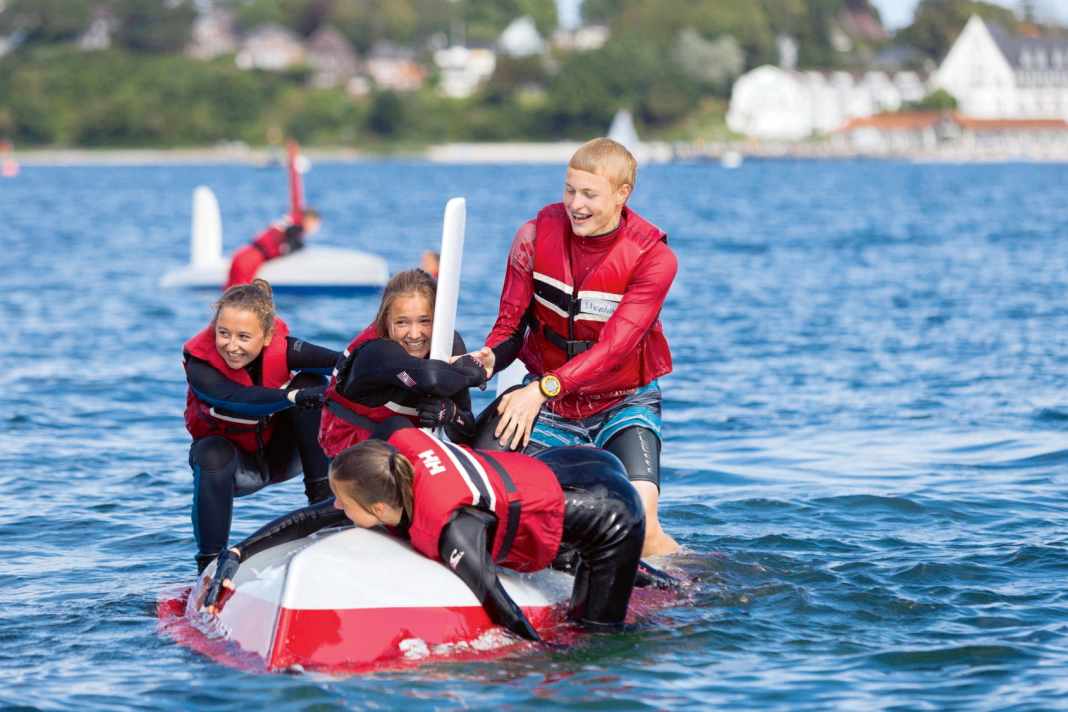





It's that moment when the engine falls silent and the boat gently cuts through the waves, accompanied by a gentle splash and gurgle at the water's edge. When the wind fills the sails and you set off on a journey with the power of nature, whether to unknown shores or as quickly as possible around the buoys. It's that moment when the spark ignites for the first time and the fascination takes hold of you - and won't let go. Every sailor knows it and remembers it fondly. Nevertheless, each of these moments is as unique as the people themselves who share this deep passion for sailing.
Read also:
This is particularly evident when you look at the careers of important personalities in sailing. Some discovered their passion for the sport by chance. Others were born with a passion for wind and waves. One example of this is the top German sailor Boris Herrmann. As the son of sailing-loving parents, he grew up in Oldenburg and was taken on a boat as an infant. He was later advised by his doctor to spend a lot of time at sea due to respiratory problems. It was another reason for the young Herrmann to spend a lot of time on board.
He later moved from long-distance sailing to regattas, where he gained experience in the Optimist, 420 and 470. He then switched to the 505 with his school friend Julien Kleiner. Among other things, the involvement of SAP co-founder Hasso Plattner and his success at the age of 19 in the Mini-Transat from France to Brazil paved the way for his professional sailing career.
Wilfried Erdmann taught himself to sail
However, the paths to the water are often not so straightforward. Wilfried Erdmann, for example, only found his way to sailing in a roundabout way. His passion for travelling initially took him to India by bike in 1958/59. It was only later that he harboured the desire to explore distant shores on a sailing boat. Due to a lack of financial means, the decisive moment came for him in 1965 in Alicante, Spain. There, Erdmann met an Englishman who offered him a second-hand boat - a seven-metre centreboard. Despite his lack of sailing experience, Erdmann bought the neglected sloop "Kathena" for 8,600 Deutschmarks.
In the months that followed, he taught himself to sail. He immersed himself in books on navigation and circumnavigations, such as those by the Frenchman Bernard Moitessier. He also familiarised himself with his boat during short trips. Erdmann's first 20-mile
Although Erdmann's first 20-mile trip to Benidorm ended in a collision and a torn jib, it taught him a valuable lesson: he spent almost a whole year preparing his boat and himself in southern Spain.
On 25 July 1966, he finally cast off, not with the fixed goal of sailing around the world, but to escape "the lazy life in Alicante". This decision was the starting signal for his impressive career as a single-handed sailor.
Jimmy Cornell went from reporter to sailing instance
Blue water icon Jimmy Cornell also came into contact with sailing in a rather indirect way while working as a reporter for the BBC World Service in London. That was in the early seventies of the last century. It was then that the Romanian-born and later Brit-by-choice discovered that the BBC had both a sailing club and a yacht club. Seizing this opportunity, he began sailing on the Thames. He quickly developed a passion for sailing on the BBC club's 40-foot yacht.
In 1974, Cornell bought his first yacht, the 36-foot "Aventura". The following year, he set off with his wife and children on a six-year round-the-world voyage. The family travelled around 68,000 nautical miles and visited around 70 countries. This important voyage marked the beginning of Cornell's lifelong enthusiasm for sailing and laid the foundations for his later career as a sailing author and organiser of numerous sailing rallies, such as the Atlantic Rally for Cruisers to the Caribbean, which departs annually from Gran Canaria.
Sailing is the most beautiful minor matter in the world
For these three outstanding sailors, it was the sport that was, or still is, at the centre of their lives. But sailing has also achieved great things in other ways. As the most beautiful pastime in the world, sailing promotes mental freedom - a quality that was also highly valued by one of the most important scientists: Albert Einstein developed his enthusiasm for sailing while studying physics in Zurich in the late 1890s. Back then, at the age of around 20, he spent a lot of time on the water, both with friends and with
Susanne Markwalder, the daughter of his landlady.
Later, it is said that he got many ideas for his physical work while sailing. Susanne Markwalder writes in her memoirs that he scribbled them down in a notebook when it was calm. In addition, ideas about the basic laws of physics were often discussed on board.
The list of possibilities is long
Whether as a result of family influences or a lucky coincidence - as soon as the fascination for sailing is awakened, the search begins for how to get on the water or into a boat as quickly as possible. Ideally, the right route should be based on your own preferences. For example, would you like to sail on the nearby inland waterways at the weekend or would you prefer to set off on sailing trips to remote regions? Are you looking for the thrill of the race course or is the shared experience of nature at the centre of your sailing pleasure? The choice of the best way to start sailing depends heavily on the personal characteristics of the beginner. Self-taught sailors often need less external motivation, while others learn better in groups and benefit from weekly training sessions at a sailing club.
In short, there are numerous ways to start sailing; the list of possibilities is long. Nevertheless, some have proven to be particularly effective. On the following pages, we present them and discuss their respective advantages and disadvantages with experts. In the end, it is up to you to filter out the path that suits you best.
Sailing clubs: the strengths of the community
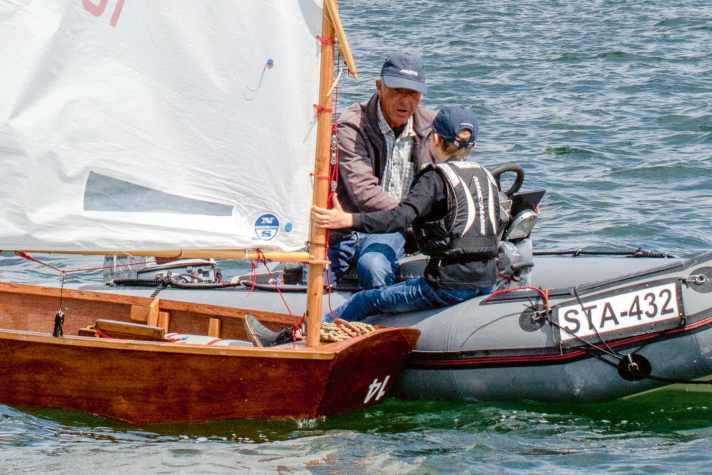
For decades, the only way to get into sailing was through club membership. Today, however, sailing schools, charter companies, boat sharing and eSailing offer a range of sometimes completely new access points. Nevertheless, the club remains a valuable option that offers numerous advantages, especially for beginners. The sense of community, for example, is a key aspect. Like-minded people come together and it is not uncommon for lifelong friendships to develop. In a club environment, you not only learn from your own mistakes, but also from the experiences of others. Boat maintenance, in turn, provides an understanding of the subject matter - and teaches children and young people in particular to take on responsibility and duties. Finally, regular training ensures consistency and strengthens stamina.
But not every club is the same. There are different offers depending on your preferences. Traditional local sailing clubs can be found almost everywhere in Germany. Some have their own boats, and many clubs have sections for young people. If you want to get into competitive sailing, you can hardly avoid the club landscape; membership of a DSV club is essential for regattas.
There are also specialised clubs, for example for students. These academic clubs are often less expensive and organised on a student basis. Some supra-regional sailing clubs, such as the Hamburgischer Verein Seefahrt or the sailing comradeship Das Wappen von Bremen, on the other hand, place great emphasis on training in ocean sailing. Traditional sailing clubs are dedicated to the maintenance of classic tall ships and are always looking for new members to get involved.
Virtual sailing: unusually effective
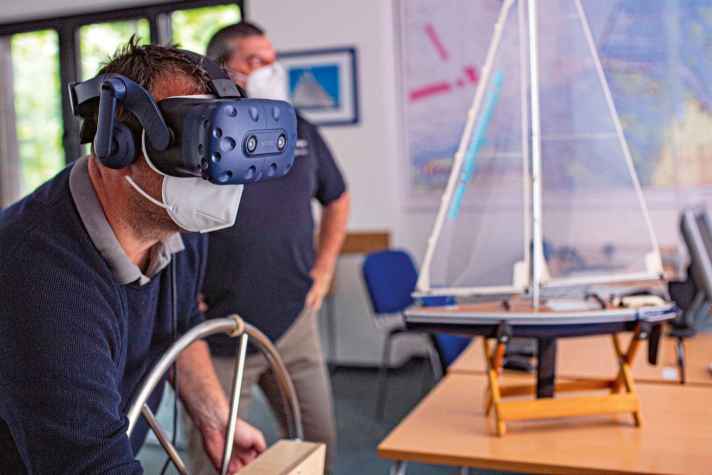
It may come as a surprise, but virtual sailing, known as eSailing, also offers a way to get in touch with sailing. Although it does not replace time on the water, it serves as an excellent incentive for beginners and is already being used by sailing schools. One advantage is that no boat, licence or knowledge is required. In addition, manoeuvres and techniques can be tried out virtually under real conditions. The Virtual Regatta platform makes it possible.
Boatsharing: sharing is fun
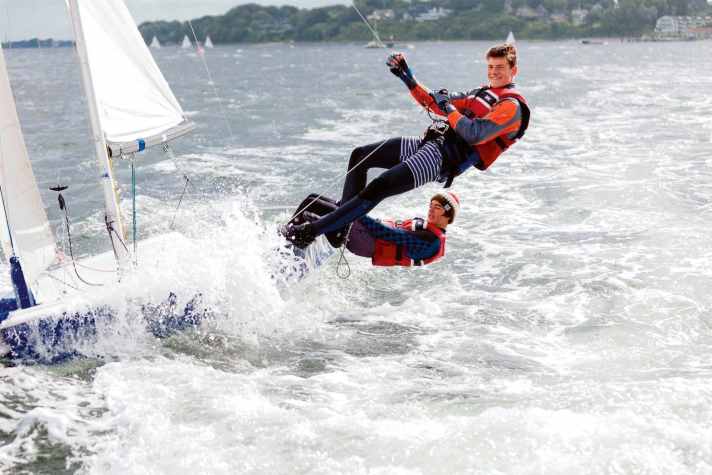
What is possible on land can also be realised on the water: With boat sharing, dinghies and
dinghies and yachts can be borrowed in the same way as cars - usually at moderate prices. This is attractive for anyone who wants to get out on the water after work or spontaneously at the weekend. The concept combines elements of clubs with the idea of chartering. In Germany, there are providers with different organisational and price structures. Examples include the Hamburg Sailing Community and the Swiss company Sailbox.
Sailing schools: learning on the water
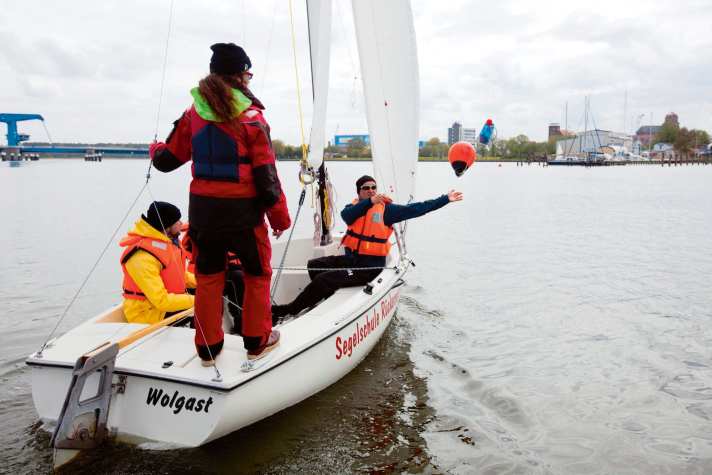
Volunteering to go to school can be fun - especially if the subject is interesting. This is especially true for people who hope to gain access to sailing through sailing licences. A major advantage of sailing schools is that the instructors have an interest in their students successfully passing their exams. Therefore, attending a sailing school often leads to a quick sense of achievement. In addition, the costs and time required are usually easy to keep track of.
With the appropriate licence in hand, the next step is often easier. This is because a sailing licence is often the prerequisite for being able to hire dinghies and charter yachts independently. However, it is important to know that the licence alone is no guarantee of seamanship or the necessary sailing skills. Choosing the right school is therefore crucial. Several associations offer guidance. The German Sailing Association (DSV), the Association of German Sports Boat Schools (VDS) and the Association of German Windsurfing and Watersports Schools (VDWS) make it easy to find the right school.
In addition, there are often sailing schools attached to holiday resorts or hotels. Alternatively, there are various sailing camps available for children, which are either organised seasonally for school groups, such as school sailing in Schleswig-Holstein or Camp 24/7 in Kiel, or individually. One special option is the High Seas High School, where a school class sails across the Atlantic for seven months, combining theory and practical experience.
Boat and berth charter: entry without commitment
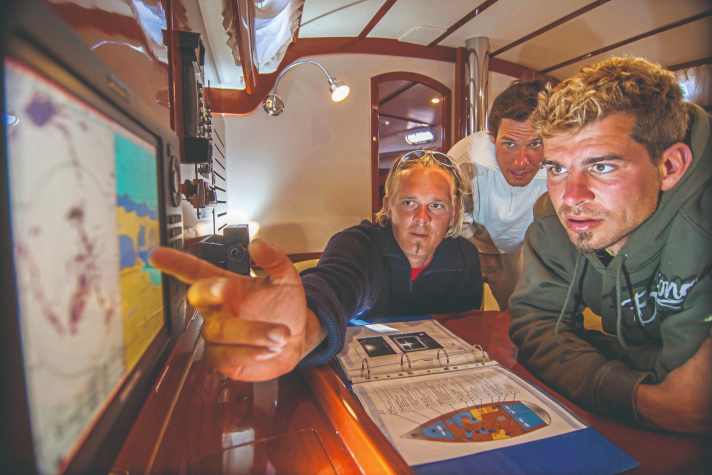
When chartering, you don't need a club or your own boat to get out on the water. However, there are differences: If you want to charter an entire boat, you generally need to have a sports boat licence, which is a basic requirement. This also requires a certain basic knowledge of sailing. A good alternative for beginners without a licence is berth chartering. This involves simply renting a place on board. A professional skipper takes charge of the ship, while the participants can help out as they wish. This is possible in sunny areas as well as along the German coast.
Berth charter is a good opportunity to gain experience on the water under expert guidance. Berth charter providers can be both commercial charter companies and private individuals. A particularly cost-effective way of chartering a berth is "hand for berth". Crews look for support for their planned trips on notice boards in sailing clubs or via online platforms. Popular sites arehandgegenkoje.de and oceancrewlink.com. It is often requested that the participants contribute to the costs on board or actively lend a hand on board.
Interview with Michael Dreyer
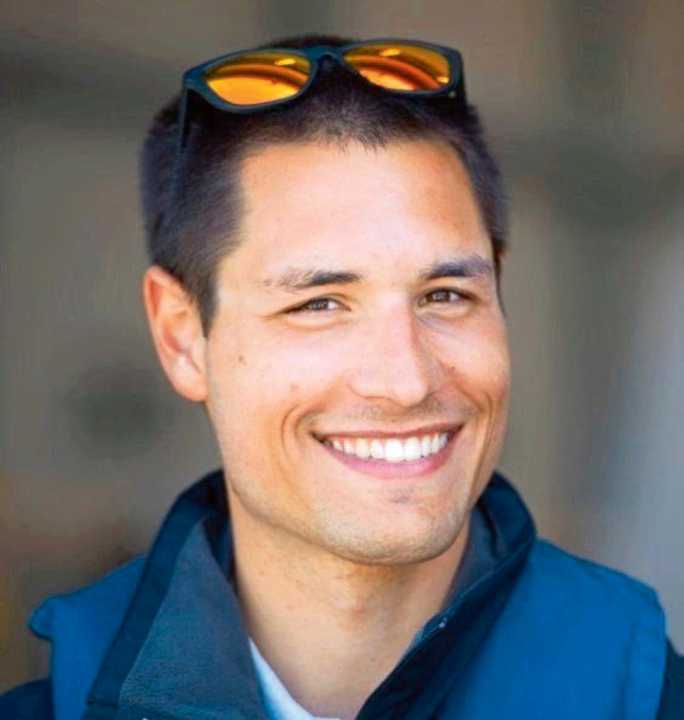
Mr Dreyer, if you want to start sailing: What advice would you give?
First of all, you have to find out whether it's for you at all. You need a protected environment to take your first steps. The area is crucial here. You also need a good training boat and an instructor who is calm and confident. It is also important where you want to go, i.e. how leisurely, how sporty, how adventurous it can be in the future.
How would you describe the classic beginner sailor?
It's hard to say, the whole spectrum is represented here: all age groups, from everywhere. Everyone wants to bravely take the plunge - often without knowing what to expect. There are also individual concerns: Is sailing too boring? Do I feel safe on the water? Will I get on with the crew?
What motivations do newcomers bring with them?
Many have already had some contact with water sports and want to deepen this. Older people may have memories from their youth that they want to relive. But we also have beginners who are trying out sailing for the first time. What they all have in common is the motivation to learn the sport from scratch. In our beginners' courses, we start from scratch and accelerate the syllabus according to previous knowledge.
How do you get young people interested in sailing?
Safety is important in the first step. The learning process must be structured and understandable, and you must feel safe. The next step is about the fun factor.
And how do you keep them?
To do this, it is important to show them what the future holds. Some decide to take driving licence exams, others go into yachting or dinghy sailing. I think starting with driving licences is the wrong way to go. First of all, it should be about enthusiasm for the sport, so that the breeding ground is laid.
Is there a branch that is particularly popular?
No, I wouldn't say that. Some want to go to sea. The younger ones are more into sports. They also enjoy the holiday camp community here with us. But sooner or later, they all make the switch to a pleasure craft licence.
Where is it better to start: sailing school or sailing club?
I think they complement each other very well. But of course, a child who trains every week reaches a completely different level. We can't do that here. What makes the flair here is the community. This protected environment is particularly important for those who don't yet have a close connection to sailing.

